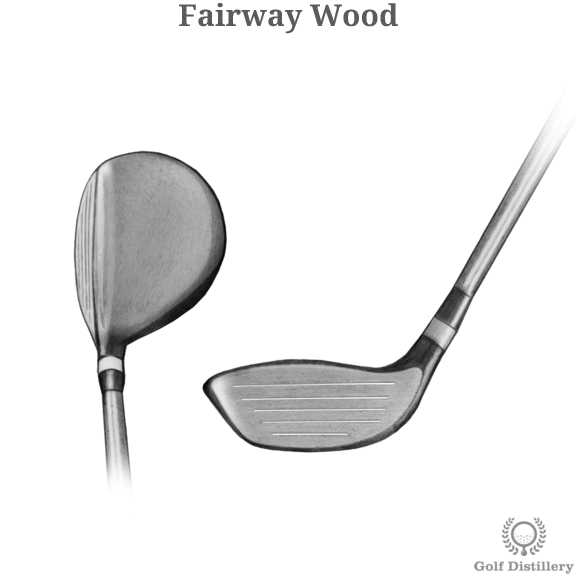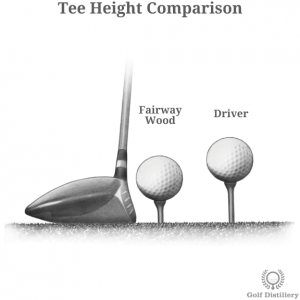Join Our Senior Golfers Newsletter!
Sign up today and receive your free Golf After 60 Bonus Stretch Guide!
As senior golfers, we often face unique challenges when it comes to our game. One aspect that requires careful attention is mastering the fairway wood. The fairway wood can be a valuable weapon in our arsenal if we know how to use it effectively. In this post, we will explore some essential tips and techniques that can help senior golfers improve their fairway wood game.

Fairway Wood: Seniors Golfers on How to Approach the Fairway Wood
First and foremost, it is crucial to choose the right fairway wood for your skill level and swing. Senior golfers usually benefit from using fairway woods with higher lofts, such as a 3-wood or a 5-wood. These clubs provide more forgiveness and height, making it easier to get the ball up in the air and achieve better distance.
When addressing the ball, position it slightly forward in your stance compared to your iron shots. This adjustment promotes a sweeping motion through impact and helps you hit the ball cleanly off the turf. It’s important to remember that fairway woods are designed to be hit on the upswing, so try to strike the ball with a slight ascending blow.
Maintaining a smooth and rhythmic swing tempo is vital when hitting fairway woods. Many seniors tend to over-swing or rush their tempo, leading to inconsistent strikes and loss of distance. Focus on maintaining a balanced and controlled swing throughout the entire motion. Practice swinging at a comfortable pace, allowing your body to rotate smoothly for optimal power and accuracy.

Another key factor in mastering the fairway wood is understanding how to approach different lies on the course. When facing a ball sitting on a tight lie, consider making a shallow divot to ensure clean contact with the ball. On the other hand, when confronted with a ball sitting in the rough or a fluffy lie, adjust your setup by positioning the ball slightly back in your stance. This setup helps to promote a steeper angle of attack, allowing the club to cut through the grass and make solid contact.
One of the most common mistakes senior golfers make with their fairway wood is trying to hit it too hard. Remember, the fairway wood is designed to provide accuracy and control rather than pure power. Swing within yourself and focus on making solid contact with the ball. A controlled swing will often yield better results in terms of both distance and accuracy.
Practicing with your fairway wood regularly is another essential aspect of improvement. Allocate time during your practice sessions specifically dedicated to fairway wood shots. Start with shorter swings and gradually work your way up to full swings. Experiment with different scenarios you might encounter on the course, such as hitting off the tee or from the fairway. By dedicating time to practicing with your fairway wood, you’ll gain confidence and consistency in your shots.
Lastly, always remember that golf is a game of strategy and decision-making. Assess the situation on the course and evaluate whether using your fairway wood is the best option. Sometimes, opting for a hybrid or a long iron may be more suitable, depending on the conditions and the shot you need to execute.

Here are some additional tips that these golfers may follow to master the fairway wood:
In conclusion, senior golfers can greatly benefit from mastering the fairway wood. By selecting the right club, practicing proper techniques, and approaching different lies effectively, we can improve our fairway wood game and enhance our overall performance on the course. So, let’s embrace the challenge, put in the practice, and make the fairway wood one of our most reliable weapons in the bag.
Some examples of senior golfers who have mastered the fairway wood:
Before you hit the course, it’s crucial to warm up your muscles and stretch properly. This will not only help prevent injuries but also improve your swing and overall performance. Start with a few minutes of light cardio exercises, such as brisk walking or jogging, to get your blood flowing. Then, focus on stretching your arms, shoulders, back, and legs. Some simple stretches include shoulder rolls, torso twists, and hamstring stretches. Remember to take it slow and listen to your body to avoid any strain or discomfort.
Once you’re warmed up and stretched, spend some time on the practice range. Hit a few balls with different clubs to find your rhythm and get a feel for your swing. This will ensure that you’re ready to tackle the challenges of the course.

As we age, our bodies change, and so does our swing. It’s essential to adapt your equipment to accommodate these changes. Consider investing in senior-friendly golf clubs with graphite shafts, which are lighter and offer more flexibility. The right equipment can make a world of difference in your performance and prevent unnecessary strain on your body.
Additionally, don’t forget to check your golf balls. Opt for low compression balls that maximize distance and minimize the impact on your joints. These balls are specifically designed for slower swing speeds, making them perfect for senior golfers.
While power and distance are important, technique is what separates the good from the great. As a senior golfer, it’s crucial to focus on your technique to ensure consistent and accurate shots. Pay attention to your posture, grip, and alignment. Practice proper weight transfer and tempo to improve your swing. Take advantage of the wealth of instructional videos and articles available online to fine-tune your technique and stay updated with the latest tips and tricks.
Remember, golf is a game of practice and patience. Don’t get discouraged if you don’t see immediate results. Keep practicing, stay positive, and most importantly, have fun! Seniors Golfers Mastering the Fairway Wood.

The fairway wood represents a category of golf clubs that is found within the woods category, alongside the driver. It designates a collection of clubs that sport both a smaller head and a shorter shaft than the driver while still keeping the general appearance of a wood with a larger round-type head, in contrast to irons.
Typically, they are used for the first stroke on short par-4s or long par-3s, and otherwise for the second stroke on par-5s or long par-4s, hence the designation of fairway in the name. The loft angle of a 3-wood would vary around 15 degrees whereas it will vary between 18 and 21 degree for what would be a 5-wood.

Tee Height Adjustment
In contrast with the driver, the fairway wood features a flatter clubface which offers a sweet spot that is located closer to the ground.
As a result, a golfer will be careful to place the tee on a lower position than he would with a driver when hitting it off the tee box. If he does not he risks skying the ball, or sending it straight up towards the sky at the considerable expense of distance.

Hitting from the Fairway
Thanks to the position of their sweet spots – located close to the ground – fairway woods allow golfers to strike the ball over great distances even when away from the tee box, such as on the fairways or in the rough.
Some golf club manufacturers have even made that feature central to their club design, such as Adams Golf, famous for their “Tight Lies” product line of fairway woods.
Much like you would when using a driver you will likely want to take a wider stance when using a fairway wood. This will give you a more stable foundation on which to build your swing. The ball should be positioned a little forward in your stance as that will promote hitting up on the ball at impact. Next, you’ll want to follow the low and slow swing thought, as well as making sure your wrists don’t hinge too early and instead use a wide backswing.




